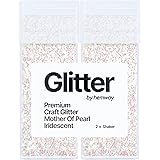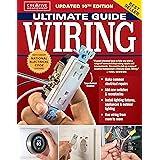A recent study by Statista indicated that Gen Z consumers, particularly school-aged individuals, spend an average of $2,000 annually on apparel. However, with economic fluctuations and a growing awareness of fashion sustainability, the savviest students are shifting their focus from fast fashion consumption to ingenious DIY solutions and strategic styling. The insightful video above, “13 Easy School Girl Fashion Hacks and Back to School DIY Clothes Ideas by Crafty Panda,” perfectly encapsulates this paradigm shift, offering a trove of creative ways to refresh your wardrobe without breaking the bank or contributing to textile waste. This accompanying article delves deeper into the principles and practical applications of these hacks, providing an expert-level guide to cultivating a distinctive, eco-conscious, and budget-friendly school style.
Elevating Your Student Style: Mastering DIY Fashion and Smart Wardrobe Hacks
The pursuit of personal expression through fashion is a universal aspect of adolescence, yet often constrained by budget and accessibility. Our exploration into effective school girl fashion hacks reveals that creativity, not capital, is the ultimate currency. Through strategic DIY projects and clever styling, students can transform mundane pieces into unique statements, significantly extending the lifecycle of their garments and contributing to a more sustainable fashion ecosystem. This proactive approach not only fosters individuality but also instills valuable skills in upcycling and textile manipulation, empowering young consumers to make more informed fashion choices.
The Art of Upcycling: Transforming Old into Gold
Upcycling, a cornerstone of sustainable fashion, involves repurposing existing materials into new products of higher value. For school girls, this means a chance to personalize their wardrobe while minimizing environmental impact. Consider the pervasive issue of textile waste; according to the Environmental Protection Agency (EPA), over 17 million tons of textile waste ended up in landfills in 2018. Embracing DIY upcycling directly combats this trend, turning potential waste into wearable art.
- Denim Redesign: An old pair of jeans offers boundless possibilities. Instead of discarding them, transform them into custom shorts with frayed edges, add embroidered patches, or even cut and sew them into a unique tote bag. The structural integrity of denim makes it highly adaptable to various modifications, offering durable and stylish results.
- T-Shirt Reconstruction: Oversized t-shirts can be cinched with elastic, cropped, or even woven into intricate designs. A basic tee can become a trendy knot-front top or a layered piece with strategic cuts. The low-cost and ubiquity of t-shirts make them ideal canvases for beginners exploring fabric manipulation.
- Sweater & Sweatshirt Makeovers: Transform a simple sweatshirt with fabric paint, iron-on vinyl designs, or by adding decorative trims. An old sweater can be cut into a stylish beanie or repurposed into leg warmers, providing both warmth and a distinct aesthetic. This not only extends the garment’s life but also offers unique cold-weather accessories.
Moreover, the process of upcycling provides an educational opportunity. Young designers gain hands-on experience with textiles, basic sewing techniques, and conceptual design, fostering a deeper understanding of garment construction and material science. This experiential learning often translates into a greater appreciation for the craftsmanship behind clothing.
Strategic Accessorizing: The Power of the Details
Accessories are the unsung heroes of any wardrobe, capable of transforming an outfit from ordinary to extraordinary. For students, who often have limited clothing options, strategic accessorizing is paramount. It allows for endless variation with a minimal investment, ensuring that even a core set of garments can feel fresh and new each day.
DIY Accessories for Personal Branding
Crafting your own accessories not only saves money but also ensures a truly unique expression of personal style. The market for mass-produced accessories often leads to stylistic homogeneity; DIY offers a potent antidote.
- Custom Headbands & Scrunchies: Fabric scraps, old scarves, or even repurposed garments can be sewn into vibrant headbands or scrunchies. This is a simple, quick project that adds a pop of color or pattern to any hairstyle. Data from accessory retailers consistently shows hair accessories as a high-demand item, making DIY versions both practical and fashionable.
- Beaded or Charm Bracelets: Using inexpensive beads, charms, and jewelry wire, students can create personalized bracelets that reflect their interests or school colors. These can be stacked for a bohemian look or worn individually for subtle elegance. This allows for fine-tuned personal expression down to the smallest detail.
- Statement Necklaces from Found Objects: Consider repurposing old keys, small trinkets, or even creatively painted bottle caps into distinctive necklace pendants. This avant-garde approach highlights resourcefulness and a unique artistic vision, setting an outfit apart from conventional styles.
Furthermore, studies on consumer psychology suggest that personalized items foster a stronger emotional connection and sense of ownership. DIY accessories leverage this psychological principle, enhancing the wearer’s confidence and satisfaction with their wardrobe.
The Capsule Wardrobe Approach: Maximizing Versatility
A capsule wardrobe, comprising a limited number of interchangeable clothing items that complement each other, is a concept often embraced by fashion minimalists. For students, this approach is incredibly practical, reducing decision fatigue, saving space, and promoting a more intentional consumption pattern. Research indicates that individuals with a well-curated capsule wardrobe tend to exhibit higher satisfaction with their clothing choices and experience less shopping anxiety.
Building a Functional School Wardrobe
The core of a successful school capsule wardrobe lies in selecting versatile pieces that can be dressed up or down with ease. Focus on quality over quantity, investing in durable fabrics and classic silhouettes that withstand trends and frequent wear.
- Core Neutrals: Begin with essential items in neutral colors (black, white, grey, navy, beige) such as well-fitting jeans, versatile trousers, basic t-shirts, and a sturdy jacket. These form the foundation upon which more vibrant pieces can be layered.
- Layering Essentials: Incorporate cardigans, denim jackets, and hooded sweatshirts. Layering is not just for warmth; it adds depth and texture to an outfit, transforming its entire aesthetic. A plain tee under a plaid flannel shirt offers a completely different vibe than the tee alone.
- Pops of Color and Pattern: Introduce a few statement pieces—a colorful blouse, a patterned skirt, or a bold accessory—to inject personality. These items, when combined with your core neutrals, create numerous unique ensembles without needing an extensive collection.
Adopting a capsule wardrobe strategy can lead to significant long-term savings. According to financial analysts, individuals who consciously curate their wardrobes report a 20-30% reduction in discretionary clothing purchases annually. This allows students to allocate funds to other essential needs or experiences, optimizing their financial resource management.
Quick Fixes & Instant Upgrades for Everyday School Life
Beyond major DIY projects, there are numerous small, impactful adjustments that can instantly upgrade an outfit or solve a common fashion dilemma. These “micro-hacks” are invaluable for busy students needing quick, effective solutions.
- The Tuck & Roll: A simple tuck of a shirt (full, half, or French tuck) or the strategic roll of a sleeve can completely alter the silhouette and formality of an outfit. This styling trick takes seconds but demonstrates an intentional approach to dressing.
- Safety Pin Savvy: A well-placed safety pin can quickly fix a gaping blouse, cinch a loose waistband, or even create temporary pleats for a structured look. This common household item becomes a powerful fashion tool in the right hands.
- Scarf Versatility: A single scarf can be worn in dozens of ways: around the neck, as a headband, a belt, or even tied to a handbag. Its transformative power on an outfit is immense, providing texture, color, and a touch of sophistication.
These rapid adjustments reflect an understanding of garment dynamics and personal fit, demonstrating an advanced level of fashion acumen. They emphasize that sophisticated style doesn’t always require elaborate preparation, but rather an eye for detail and practical execution.
Conclusion for School Girl Fashion Hacks
Ultimately, the realm of school girl fashion hacks and back to school DIY clothes ideas is about more than just saving money; it’s about fostering creativity, promoting sustainability, and cultivating a distinct personal style. By engaging with upcycling, strategic accessorizing, and intelligent wardrobe management, students are not only dressing themselves but also investing in valuable life skills and contributing to a more conscious consumption culture. The insights from the video, combined with these deeper dives into practical application and theoretical underpinnings, equip the modern student with the tools to navigate the complexities of fashion with confidence and ingenuity, solidifying their unique school girl fashion hacks.







